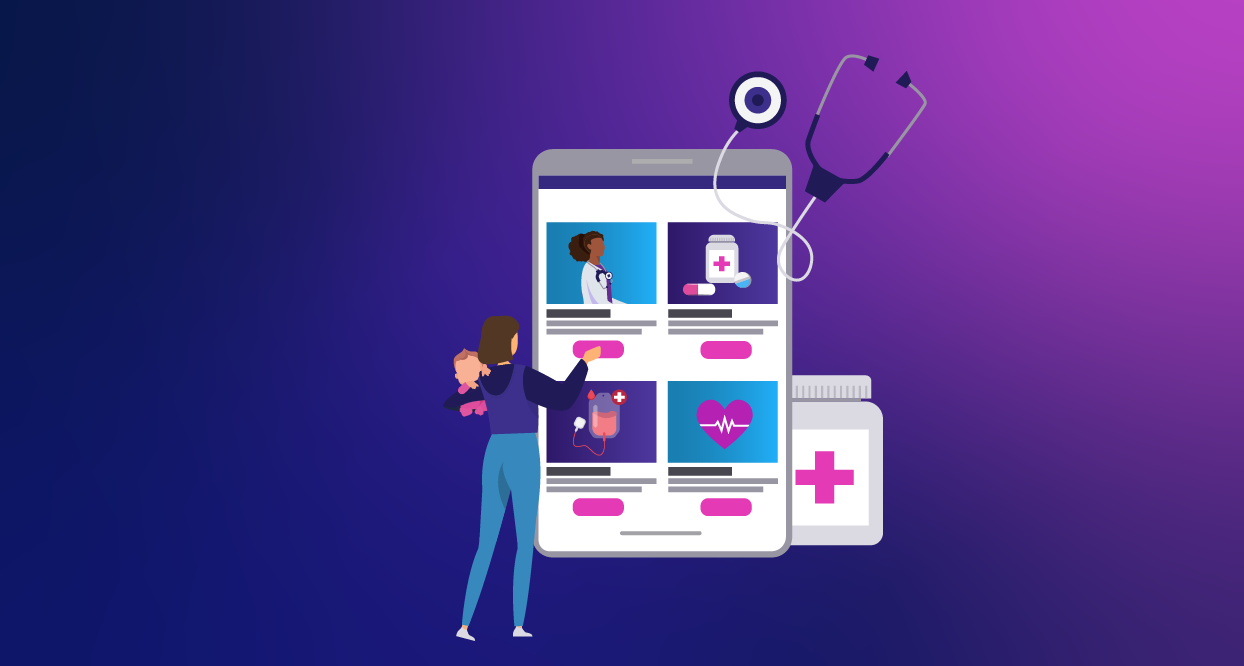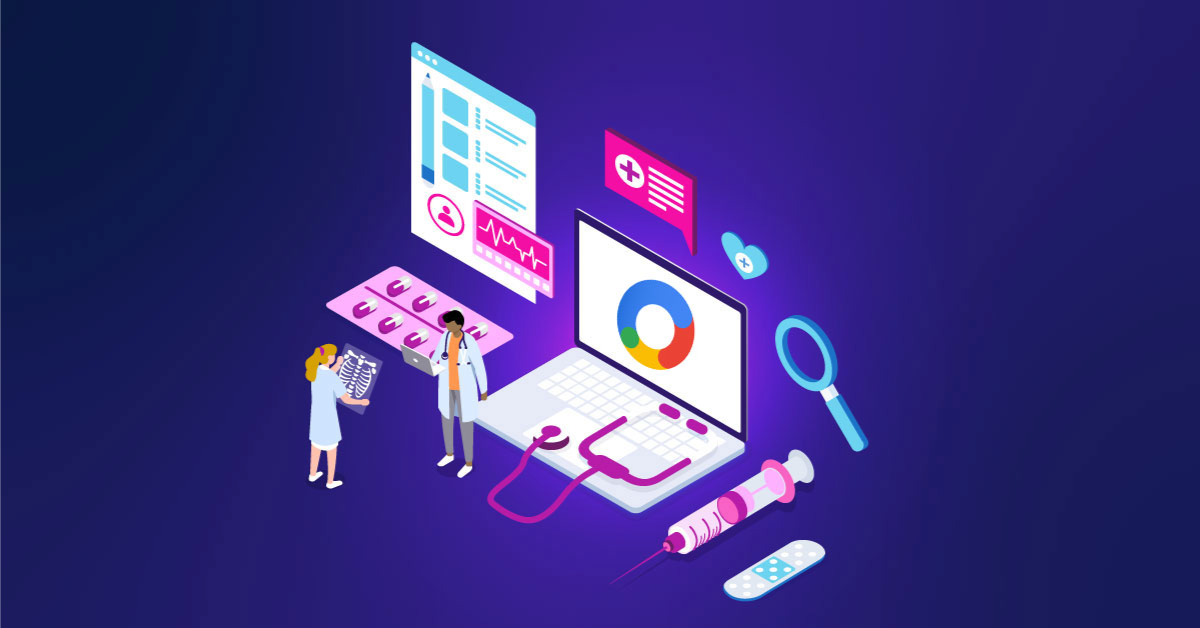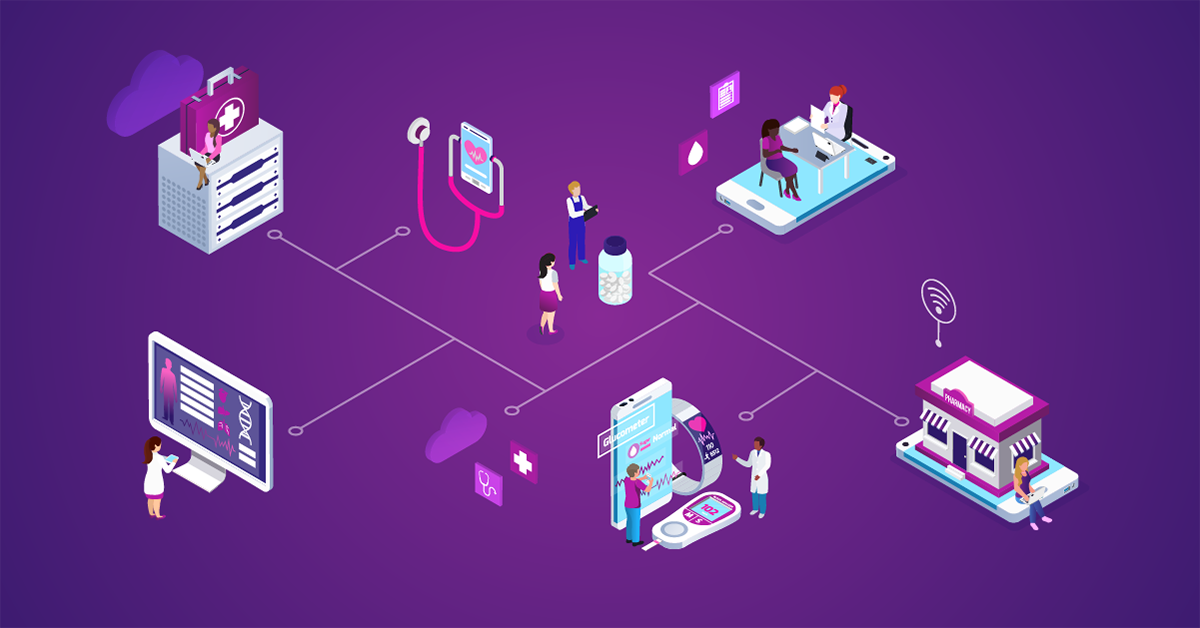Enhancing Care: The Role of Technology to Enable Modern Healthcare

Patient experience is a key performance measure for hospitals. And positive patient experience leads to improved health outcomes as patients are more engaged in their care. In a world where digital is critical and consumerism is driving expectations, how are we leveraging technology to transform the patient journey? Harnessing data and technology allows for innovative experiences in the healthcare space to connect people to the care and services they need, when and where they need them.
By focusing on human-centered, personalized, and connected healthcare experiences, we can improve healthcare delivery and make significant gains in the medical field – from reimagining the hospital visit experience for patients to unlocking keys for payers and providers to improve health outcomes for the future.
Decoding the Patient Experience: A Multifaceted Approach
Patient experience is how a person feels about receiving care and also the perception they have from the care that they receive. It is a result of many factors in care quality and can include everything from scheduling appointments to bedside manner with doctors or even wait times and the hospital environment. According to Forrester, as the consumer experience improves across other industries, it is important to recognize this and deliver the same capabilities in the healthcare industry that they would receive in other aspects of their lives.
Patient experience is a key indicator of quality of care in the healthcare industry and is tied to both treatment effectiveness as well as patient safety. Patients are empowered in their healthcare choices when they have a positive patient experience, which can ultimately help improve patient outcomes.
Additionally, positive patient experiences have a correlation to improved access to care, improved staff engagement, and greater overall satisfaction of all parties involved in delivering patient care. Forrester reports that a patient who has a positive interaction with their provider is more likely to adhere to their care or medication plan and more likely to experience better health outcomes following discharge. What’s more, there’s a growing body of evidence that patients who are more engaged from a knowledge, skills, and confidence standpoint have better health outcomes. When healthcare experiences aren’t intentionally designed around patient needs, great outcomes are less likely to happen consistently.
Advancing Patient-Centered Healthcare
So how exactly can digital and marketing technology improve healthcare delivery? It’s all about prioritizing the patient experience and moving toward patient-centered care. Making the patient the primary focus and equipping them with the tools they need to achieve holistic wellness on their own and with their care team is key to unlocking success in the healthcare industry. Improving the patient experience will in turn benefit other key stakeholders, as well.
Reimagining the patient experience is a complex endeavor that requires careful planning, investment, and consideration of various challenges. This includes mapping the entire patient journey and understanding every interaction – from the moment a patient needs care to how they manage their care after they leave the hospital or a provider’s office. Involving key stakeholders surrounding the patient journey – from healthcare providers and care teams to caregivers and payers – will uncover valuable insights and truly help us understand the health needs of patients to design comprehensive solutions to reshape the patient experience and improve health outcomes.
Understanding the patient journey and the role that the hospital systems or health systems play in support of them will help uncover pain points such as moments of frustration or anxiety.
Some of the common areas of friction that need to be addressed include patient, provider, and payer communications, appointment booking processes, insurance coverage verification as well as financial literacy and education. Forrester’s data shows that “56% of US online adults with health insurance feel that their health insurer should do more to help them understand what healthcare services cost. Over 40% say that their health insurer’s financial forms (such as bills and statements) are hard to understand, and nearly 40% say that they don’t understand what benefits and services are covered under their current health insurance plan.”
Being able to pinpoint specific pain points as well as areas of improvement will help lead to meaningful solutions that will make a positive impact. Showing up in the right way and orchestrating communications, waiting room experiences or post-op follow-ups around the patient will drive greater health outcomes.
Transformation happens one step at a time and while you can’t change large, interdependent processes overnight, you can make small improvements that will help better align patients with their healthcare needs.
Leveraging Digital Breakthroughs for Transformative Healthcare
There are many advancements that are shaping the future of healthcare, promoting patient satisfaction, and revolutionizing healthcare delivery today.
Personalized patient portals and remote monitoring systems are integrating cutting-edge technologies for a more connected and seamless healthcare experience and improved content delivery. In addition, digital first programs as well as relevant and contextual content are helping to improve healthcare literacy, transform patient engagement, extend healthcare beyond the four walls of healthcare organizations, and streamline healthcare task automation. Innovative tools such as IoT devices, artificial intelligence, and data analytics are also empowering patients to take a more active role in their healthcare journey and helping to design comprehensive solutions to improve health outcomes.
Ultimately, embracing digital technology is at the forefront of all of these healthcare trends. From leveraging digital accelerators to creating connected, interoperable solutions – using technology, measurement and orchestration to reshape the patient journey and enable more personalized healthcare experiences is how we’ll ultimately be able to improve healthcare delivery and outcomes.
Maximizing Healthcare Outcomes through Technology Integration
Technology has the potential to profoundly impact patient experiences and outcomes. At our core, we believe healthcare is human. We believe everyone deserves access to quality health and human services. Digital technology can make health services more personal and accessible, prevent healthcare costs from increasing, and reduce inefficiencies to help promote the quality of care.
From early detection and intervention through continuous monitoring, patients benefit from personalized care plans. Improvement in communication and engagement with care teams further contribute to an enhanced patient experience.
Streamlined workflows and optimized resource utilization ensure smoother operations, while data-driven insights facilitate more effective resource planning and management.
Ultimately, innovation is about addressing experience improvements and optimizing engagement models across ecosystems. We feel strongly that doing things better and doing better things will drive greater health outcomes. It is our mission to connect people to the care they need, when and where they need it, and to help organizations create experiences that get them closer to those they serve.
Strategic Steps Towards Enhanced Patient-Centric Care
Prioritize the Patient Experience: Begin by shifting the focus towards patient-centered care. This involves making the patient the core of all healthcare decisions and strategies. Ensure they are equipped with the necessary tools for holistic wellness, both independently and in collaboration with their care team.
Map the Patient Journey: Conduct a comprehensive mapping of the patient journey, starting from the initial need for care to post-care management. This step is crucial for understanding every touchpoint a patient encounters throughout their healthcare experience.
Involve Key Stakeholders: Engage all parties involved in the patient’s healthcare journey, including providers, care teams, caregivers, and payers. Their insights are invaluable in comprehending the diverse health needs of patients and designing effective, patient-focused solutions.
Identify and Address Pain Points: Recognize and tackle common areas of friction in the patient experience. This includes improving communication between patients, providers, and payers, streamlining appointment booking processes, clarifying insurance coverage, and enhancing patient financial literacy and education.
Utilize Data to Guide Improvements: Employ data analytics to deeply understand patient frustrations and needs. Focus on identifying areas such as patient understanding of healthcare costs, insurance coverage, and clarity of financial forms. This step is crucial for recognizing and addressing the gaps in patient knowledge and expectations, which can lead to a more informed and satisfied patient base. Using such insights, tailor your strategies to meet these specific needs and improve the overall patient experience.
Orchestrate Effective Communication and Care Processes: Focus on refining all aspects of patient interaction, from communication strategies to waiting room experiences and post-operative follow-ups. Ensure these elements are patient-centric, promoting a positive and supportive environment.
Implement Incremental Changes for Continuous Improvement: Recognize that transformation is a gradual process. Start with small, manageable improvements that align better with patient healthcare needs. Over time, these adjustments can lead to significant enhancements in the overall patient care system.
By embracing these strategic steps, healthcare providers can progressively transform their services. This transformation is not just about adopting new technologies or methodologies; it's about a fundamental shift in perspective. It's about seeing healthcare through the lens of the patient and recognizing that small, incremental changes can collectively lead to significant enhancements in patient care. As we embark on this journey, our mission remains clear - to connect people to the care they need, when and where they need it, and to assist organizations in creating experiences that bring them closer to those they serve. It is through this mission that we will continue to drive greater health outcomes, ensuring that innovation in healthcare is not just about doing things better, but about doing better things.


